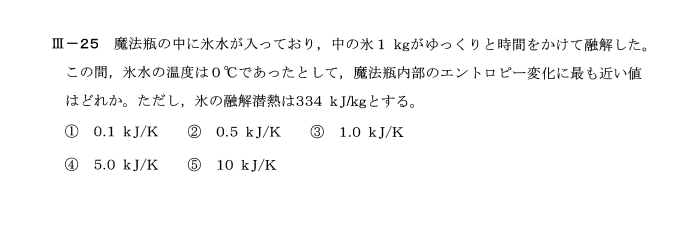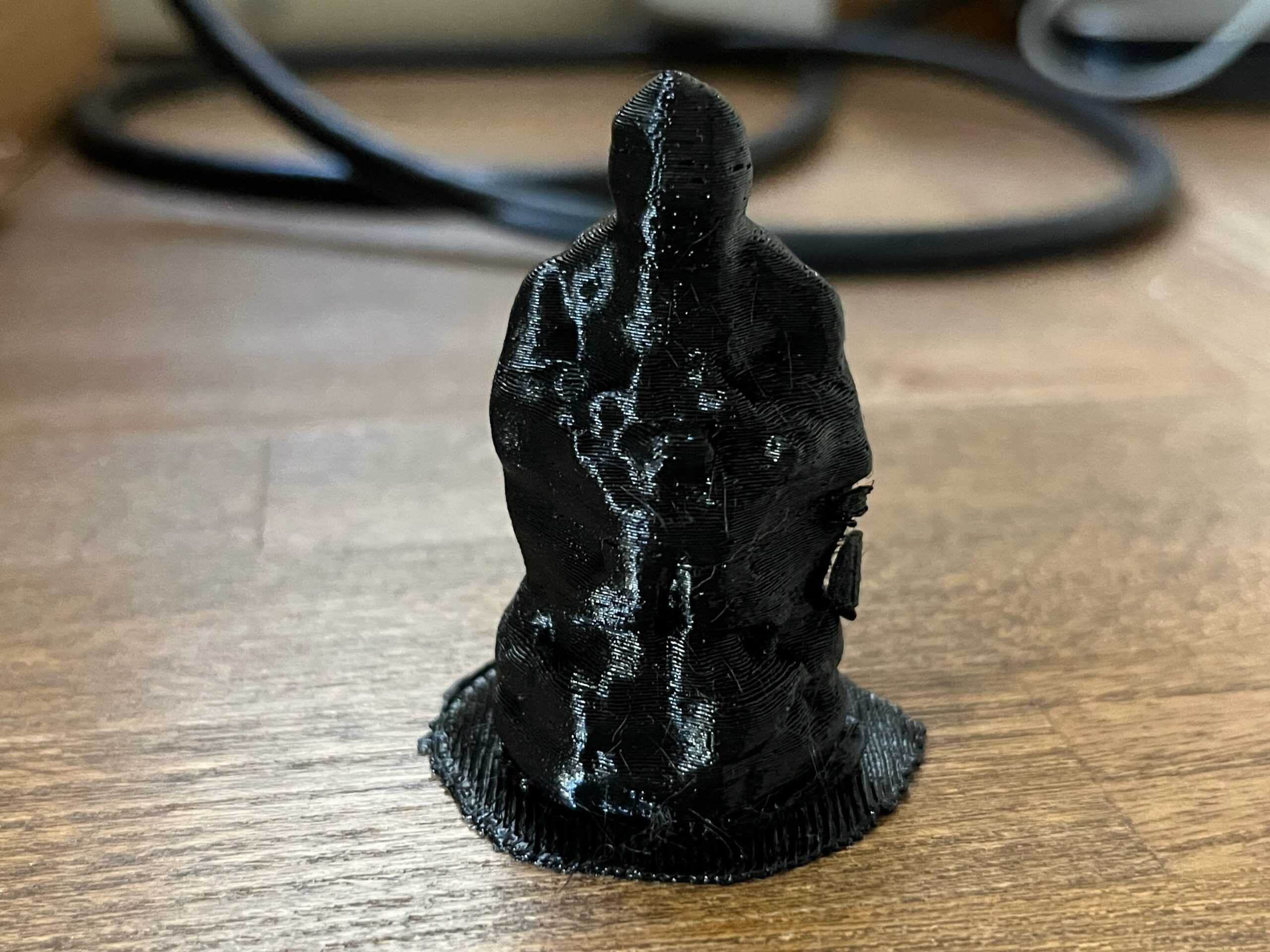分散型自律組織(DAO)とは、中央の指導者を持たない組織です。ブロックチェーン上で施行される特定のルールセットを中心に組織されたコミュニティによって統治され、ボトムアップから意思決定が行われます。
DAOは、メンバーによって所有され、管理されるインターネットネイティブな組織です。DAOには、メンバーの承認がなければアクセスできない資金が組み込まれています。意思決定は、指定された期間中にグループが投票する提案によって行われます。
DAOは、階層的な管理なしで機能し、多くの目的を持つことができます。契約者が資金をプールしてソフトウェアのサブスクリプションを支払うフリーランサーネットワーク、メンバーが寄付を承認する慈善団体、グループが所有するベンチャーキャピタルなど、これらの組織ですべて可能です。
次に進む前に、インターネットネイティブな組織であるDAOと、そのような組織が初めて作られた1つであるThe DAOを区別することが重要です。The DAOは2016年に設立されたプロジェクトで、最終的に失敗し、イーサリアムネットワークの劇的な分裂につながりました。
DAOはどのように機能するのか?
前述の通り、DAOはボトムアップで意思決定が行われる組織であり、メンバーの集合体が組織を所有します。DAOに参加するには様々な方法があり、通常はトークンを所有することで参加できます。
DAOはスマートコントラクトを使用して運営されており、これは基本的に、一連の基準が満たされたときに自動的に実行されるコードの塊です。スマートコントラクトは現在、数多くのブロックチェーンに導入されているが、イーサリアムが最初に使用した。
これらのスマートコントラクトは、DAOのルールを確立します。DAOに出資している人は投票権を得て、ガバナンスの提案を決めたり、新しい提案を作ったりして、組織の運営に影響を与えることができる。
このモデルは、DAOが提案のスパムメールを受けるのを防ぎます。提案は、ステークホルダーの大多数が承認した場合にのみ可決されます。その過半数がどのように決定されるかはDAOによって異なり、スマートコントラクトで指定されます。
DAOは完全に自律的で透明性があります。オープンソースのブロックチェーン上に構築されているため、誰でもそのコードを閲覧することができます。また、ブロックチェーンがすべての金融取引を記録するため、誰でもその内蔵された会計を監査することができます。
Typically, a DAO launch occurs in three major steps
Smart contract creation: First, a developer or group of developers must create the smart contract behind the DAO. After launch, they can only change the rules set by these contracts through the governance system. That means they must extensively test the contracts to ensure they don’t overlook important details.
Funding: After the smart contracts have been created, the DAO needs to determine a way to receive funding and how to enact governance. More often than not, tokens are sold to raise funds; these tokens give holders voting rights.
Deployment: Once everything is set up, the DAO needs to be deployed on the blockchain. From this point on, stakeholders decide on the future of the organization. The organization’s creators — those who wrote the smart contracts — no longer influence the project any more than other stakeholders.
Why do we need DAOs?
Being internet-native organizations, DAOs have several advantages over traditional organizations. One significant advantage of DAOs is the lack of trust needed between two parties. While a traditional organization requires a lot of trust in the people behind it — especially on behalf of investors — with DAOs, only the code needs to be trusted.
Trusting that code is easier to do as it’s publicly available and can be extensively tested before launch. Every action a DAO takes after being launched has to be approved by the community and is completely transparent and verifiable.
Such an organization has no hierarchical structure. Yet, it can still accomplish tasks and grow while being controlled by stakeholders via its native token. The lack of a hierarchy means any stakeholder can put forward an innovative idea that the entire group will consider and improve upon. Internal disputes are often easily solved through the voting system, in line with the pre-written rules in the smart contract.
By allowing investors to pool funds, DAOs also give them a chance to invest in early-stage startups and decentralized projects while sharing the risk or any profits that may come out of them.
通常、DAOの立ち上げは大きく3つのステップで行われます。
スマートコントラクトの作成。まず、開発者または開発者のグループが、DAOの背後にあるスマートコントラクトを作成する必要があります。ローンチ後、彼らはガバナンスシステムを通じてのみ、これらの契約によって設定されたルールを変更することができます。つまり、開発者はコントラクトを徹底的にテストし、重要な部分を見落とさないようにしなければならない。
資金調達。スマートコントラクトが作成された後、DAOは資金を受け取る方法と、ガバナンスを実現する方法を決定する必要がある。多くの場合、資金調達のためにトークンが販売され、トークンの保有者には議決権が与えられます。
デプロイメント(展開)。すべてのセットアップが完了したら、DAOをブロックチェーン上にデプロイする必要があります。この時点から、ステークホルダーが組織の将来を決定する。組織のクリエイター(スマートコントラクトを書いた人)は、もはや他のステークホルダー以上にプロジェクトに影響を与えることはない。
なぜDAOが必要なのか?
インターネットネイティブな組織であるDAOは、従来の組織と比較していくつかの利点があります。DAOの大きな利点の1つは、2者間に必要な信頼がないことです。伝統的な組織は、その背後にいる人々、特に投資家のために多くの信頼を必要としますが、DAOでは、コードのみを信頼する必要があります。
そのコードを信頼することは、それが公に利用可能であり、ローンチ前に広範囲にテストすることができるため、容易に行うことができます。DAOが起動した後に取るすべてのアクションは、コミュニティによって承認されなければならず、完全に透明で検証可能である。
このような組織には、階層的な構造がありません。しかし、そのネイティブトークンを介してステークホルダーによって制御されながら、タスクを達成し、成長することができます。階層構造がないため、どのステークホルダーも革新的なアイデアを出すことができ、それをグループ全体で検討し、改善することができます。内部での争いは、スマートコントラクトにあらかじめ書かれたルールに沿って、投票システムで簡単に解決されることが多い。
また、投資家が資金をプールすることで、DAOは初期段階のスタートアップや分散型プロジェクトに投資する機会を与え、リスクやそこから生まれる利益を共有することができるのです。
The principal-agent dilemma
The main advantage of DAOs is that they offer a solution to the principal-agent dilemma. This dilemma is a conflict in priorities between a person or group (the principal) and those making decisions and acting on their behalf (the agent).
Problems can occur in some situations, with a common one being in the relationship between stakeholders and a CEO. The agent (the CEO) may work in a way that’s not in line with the priorities and goals determined by the principal (the stakeholders) and instead act in their own self-interest.
Another typical example of the principal-agent dilemma occurs when the agent takes excessive risk because the principal bears the burden. For example, a trader can use extreme leverage to chase a performance bonus, knowing the organization will cover any downside.
DAOs solve the principal-agent dilemma through community governance. Stakeholders aren’t forced to join a DAO and only do so after understanding the rules that govern it. They don’t need to trust any agent acting on their behalf and instead work as part of a group whose incentives are aligned.
Token holders’ interests align as the nature of a DAO incentivizes them not to be malicious. Since they have a stake in the network, they will want to see it succeed. Acting against it would be acting against their self-interests.
What was The DAO?
The DAO was an early iteration of modern decentralized autonomous organizations. It was launched back in 2016 and designed to be an automated organization that acted as a form of venture capital fund.
Those who owned DAO tokens could profit from the organization’s investments by either reaping dividends or benefitting from price appreciation of the tokens. The DAO was initially seen as a revolutionary project and raised $150 million in Ether (ETH), one of the greatest crowdfunding efforts of the time.
The DAO launched on April 30, 2016, after Ethereum protocol engineer Christoph Jentzsch released the open-source code for an Ethereum-based investment organization. Investors bought DAO tokens by moving Ether to its smart contracts.
A few days into the token sale, some developers expressed concerns that a bug in The DAO’s smart contracts could allow malicious actors to drain its funds. While a governance proposal was set forth to fix the bug, an attacker took advantage of it and siphoned over $60 million worth of ETH from The DAO’s wallet.
At the time, around 14% of all ETH in circulation was invested in The DAO. The hack was a significant blow to DAOs in general and the then one-year-old Ethereum network. A debate within the Ethereum community ensued as everyone scrambled to figure out what to do. Initially, Ethereum co-founder Vitalik Buterin proposed a soft fork that would blacklist the attacker’s address and prevent them from moving the funds.
The attacker or someone posing as them then responded to that proposal, claiming the funds had been obtained in a “legal” way according to the smart contract’s rules. They claimed they were ready to take legal action against anyone who tried to seize the funds.
The hacker even threatened to bribe ETH miners with some of the stolen funds to thwart a soft fork attempt. In the debate that ensued, a hard fork was determined to be the solution. That hard fork was implemented to roll back the Ethereum network’s history to before The DAO was hacked and reallocate the stolen funds to a smart contract that allowed investors to withdraw them. Those who disagreed with the move rejected the hard fork and supported an earlier version of the network, known as Ethereum Classic (ETC).
Disadvantages of DAOs
Decentralized autonomous organizations aren’t perfect. They are an extremely new technology that has attracted much criticism due to lingering concerns regarding their legality, security and structure.
MIT Technology Review has, for example, revealed it considers it a bad idea to trust the masses with important financial decisions. While MIT shared its thoughts back in 2016, the organization appears to have never changed its mind on DAOs — at not least publicly. The DAO hack also raised security concerns, as flaws in smart contracts can be hard to fix even after they are spotted.
DAOs can be distributed across multiple jurisdictions, and there’s no legal framework for them. Any legal issues that may arise will likely require those involved to deal with numerous regional laws in a complicated legal battle.
In July 2017, for example, the United States Securities and Exchange Commission issued a report in which it determined that The DAO sold securities in the form of tokens on the Ethereum blockchain without authorization, violating portions of securities law in the country.
プリンシパルエージェントのジレンマ
DAOの最大の利点は、プリンシパルとエージェントのジレンマに対する解決策を提供することです。このジレンマは、個人またはグループ(プリンシパル)と、意思決定や行動を代行する人(エージェント)との間の優先順位の対立を意味する。
問題はいくつかの状況で発生する可能性があり、一般的なものはステークホルダーとCEOの関係である。エージェント(CEO)は、プリンシパル(ステークホルダー)が決めた優先順位や目標に沿わず、自己の利益のために行動してしまうことがあるのです。
また、プリンシパル・エージェントのジレンマの典型的な例として、プリンシパルが負担するために、エージェントが過剰なリスクを取ることが挙げられます。例えば、あるトレーダーは、組織があらゆるマイナス面をカバーすることを知っているので、業績賞与を追いかけるために極端なレバレッジをかけることができます。
DAOは、コミュニティガバナンスを通じて、プリンシパル・エージェントのジレンマを解決します。ステークホルダーはDAOに参加することを強制されず、DAOを支配するルールを理解した後にのみ参加することができます。彼らは自分たちのために行動するエージェントを信頼する必要はなく、代わりにインセンティブが一致したグループの一員として働きます。
トークン・ホルダーは、DAOの性質上、悪意を持たないようにインセンティブを与えられるため、利害が一致します。彼らはネットワークに利害関係があるので、それが成功するのを見たいと思うでしょう。それに反する行為をすることは、彼らの自己利益に反する行為となるのです。
DAOとは何だったのか?
The DAOは、現代の分散型自律組織の初期のイテレーションであった。2016年に立ち上げられ、ベンチャーキャピタルファンドの一形態として機能する自動化された組織として設計されました。
DAOトークンを所有する人々は、配当を得るか、トークンの価格上昇から利益を得ることで、組織の投資から利益を得ることができました。DAOは当初、革命的なプロジェクトと見なされ、当時のクラウドファンディングの中でも最大級の1億5000万ドルのイーサ(ETH)資金を集めた。
DAOは2016年4月30日、イーサリアムのプロトコルエンジニアであるクリストフ・ジェンツシュが、イーサリアムベースの投資組織のオープンソースコードを公開したことで始動した。投資家はそのスマートコントラクトにイーサを移動してDAOトークンを購入した。
トークンセールが始まって数日後、一部の開発者は、The DAOのスマートコントラクトのバグにより、悪意のある行為者が資金を流出させる可能性があるとの懸念を表明した。バグを修正するためのガバナンス案が打ち出される中、攻撃者がそれを利用し、The DAOのウォレットから6000万ドル相当以上のETHを吸い上げたのである。
当時、流通している全ETHの約14%がThe DAOに投資されていた。このハッキングは、DAO全般と、当時1年だったイーサリアムのネットワークに大きな打撃を与えた。イーサリアムのコミュニティでは、皆が何をすべきかを考えるために奔走し、議論が続きました。当初、イーサリアムの共同創設者であるVitalik Buterin氏は、攻撃者のアドレスをブラックリスト化し、資金を動かせないようにするソフトフォークを提案した。
すると、攻撃者または攻撃者を装った人物がその提案に応じ、スマートコントラクトのルールに従って「合法的」な方法で資金を得たと主張した。資金を押収しようとする者に対しては、法的措置を取る用意があると主張したのです。
このハッカーは、ソフトフォークの試みを阻止するために、盗んだ資金の一部でETHマイナーを買収するとまで脅した。その後行われた議論では、ハードフォークが解決策であると判断されました。そのハードフォークは、イーサリアムネットワークの歴史をThe DAOがハッキングされる前まで巻き戻し、盗まれた資金を投資家が引き出せるようなスマートコントラクトに再配分するために実施されたものです。この動きに反対する人々はハードフォークを拒否し、イーサリアムクラシック(ETC)と呼ばれるネットワークの以前のバージョンを支持しました。
DAOのデメリット
分散型自律組織は完璧ではありません。極めて新しい技術であり、その合法性、セキュリティ、構造に関する懸念が残っているため、多くの批判を集めている。
例えば、MITテクノロジーレビューは、重要な金融の決定を大衆に任せるのは良くないと考えていることを明らかにした。MITは2016年にその考えを伝えたが、同組織はDAOに対する考えを--少なくとも公には--変えていないようだ。DAOのハッキングは、スマートコントラクトの欠陥が発見された後でも修正するのが困難であることから、セキュリティ上の懸念も引き起こした。
DAOは複数の管轄区域に分散される可能性があり、法的枠組みもない。法的な問題が発生した場合、関係者は多数の地域の法律に対応する必要があり、複雑な法廷闘争を強いられる可能性が高い。
例えば、2017年7月、米国証券取引委員会は、The DAOがイーサリアムのブロックチェーン上でトークンの形で無許可で証券を販売し、同国の証券法の一部に違反していると判断する報告書を発表しました。
Examples of DAOs
Decentralized autonomous organizations have gained traction over the last few years and are now fully incorporated into many blockchain projects. The decentralized finance (DeFi) space uses DAOs to allow applications to become fully decentralized, for example.
To some, the Bitcoin (BTC) network is the earliest example of a DAO there is. The network scales via community agreement, even though most network participants have never met each other. It also does not have an organized governance mechanism, and instead, miners and nodes have to signal support.
However, Bitcoin is not seen as a DAO by today’s standards. By current measures, Dash would be the first true DAO, as the project has a governance mechanism that allows stakeholders to vote on the use of its treasury.
Other, more advanced DAOs, including decentralized networks built on top of the Ethereum blockchain, are responsible for launching cryptocurrency-backed stablecoins. In some cases, the organizations that initially launched these DAOs slowly give away control of the project to one day become irrelevant. Token holders can actively vote on governance proposals to hire new contributors, add new tokens as collateral for their coins or adjust other parameters.
In 2020, a DeFi lending protocol launched its own governance token and distributed it through a liquidity mining process. Essentially, anyone who interacted with the protocol would receive tokens as a reward. Other projects have since replicated and adapted the model.
Now, the list of DAOs is extensive. Over time, it has become a clear concept that has been gaining traction. Some projects are still looking to achieve complete decentralization through the DAO model, but it’s worth pointing out they are only a few years old and have yet to achieve their final goals and objectives.
As internet-native organizations, DAOs have the potential to change the way corporate governance works completely. While the concept matures and the legal gray area they operate in is cleared, more and more organizations may adopt a DAO model to help govern some of their activities.
DAOの例
分散型自律組織はここ数年で人気を博し、今では多くのブロックチェーン・プロジェクトに完全に組み込まれています。分散型金融(DeFi)分野では、アプリケーションを完全に分散化できるようにするためにDAOを使用しています。
ビットコイン(BTC)ネットワークは、DAOの最も初期の例であるとも言われています。このネットワークは、ほとんどのネットワーク参加者がお互いに会ったことがないにもかかわらず、コミュニティの合意によってスケールしています。また、組織的なガバナンス機構を持たず、代わりにマイナーとノードが支持を表明しなければならない。
しかし、ビットコインは今日の基準ではDAOと見なされていない。現在の基準では、Dashが最初の真のDAOとなる。このプロジェクトは、ステークホルダーがその国庫の使用について投票できるガバナンス機構を備えているからである。
イーサリアム・ブロックチェーン上に構築された分散型ネットワークなど、より高度な他のDAOは、暗号通貨を裏付けとする安定コインの立ち上げを担っている。これらのDAOを最初に立ち上げた組織は、いつか無関係になるために、徐々にプロジェクトのコントロールを手放していくケースもあります。トークン保有者は、新しい貢献者を雇用したり、コインの担保として新しいトークンを追加したり、その他のパラメータを調整するためのガバナンス提案に積極的に投票することができます。
2020年、DeFiレンディングプロトコルが独自のガバナンストークンを立ち上げ、流動性マイニングによってそれを配布しました。基本的に、プロトコルと対話した人は誰でも報酬としてトークンを受け取ることができました。その後、他のプロジェクトがこのモデルを複製し、適応させた。
現在では、DAOのリストは広範囲に及んでいます。時が経つにつれて、それは明確なコンセプトとなり、支持を集めるようになりました。DAOモデルによる完全な分散化を目指しているプロジェクトもありますが、まだ数年しか経っておらず、最終的な目標や目的を達成できていないことは指摘しておくべきでしょう。
インターネットネイティブな組織であるDAOは、企業統治のあり方を完全に変える可能性を持っています。コンセプトが成熟し、彼らが活動する法的なグレーゾーンがクリアになる一方で、より多くの組織が活動の一部を統治するためにDAOモデルを採用する可能性があるのです。
<参考記事>





